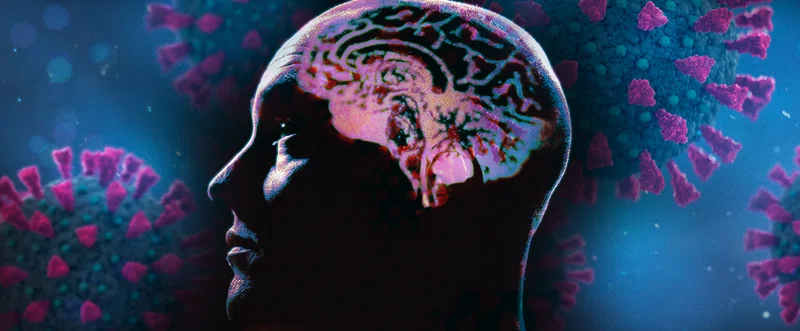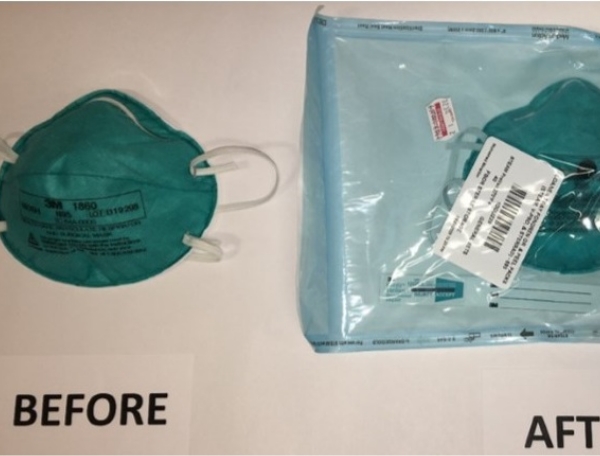


Clinical Research
The COVID-19 virus SARS-COV-2 affects the brain and may cause long-range complications

COVID-19, which is predominantly thought to be a respiratory disease, targets the brain as well, directly or indirectly. The virus responsible for COVID-19 – the severe acute respiratory syndrome coronavirus 2 (SARS-COV-2) is one of several coronaviruses among a family of viruses found in humans, bats and birds. According to the Centers for Disease Control and Prevention (CDC), there are seven coronavirus strains that affect humans. 229E, NL63, OC43, and HKU1 lead to mild upper respiratory symptoms and are responsible for 20% of common cold cases. On the other hand, the remaining three strains – severe acute respiratory syndrome coronavirus (SARS-COV), Middle East respiratory syndrome coronavirus (MERS-CoV), and SARS-COV-2 can cause severe, potentially fatal illnesses.
The novel SARS-COV-2 virus affects not only the respiratory system but also multiple organs including the heart, vascular system, digestive system and brain. The brain is impacted by other coronavirus strains as well, including MERS-COV and SARS-COV. According to the World Federation of Neurology, the SARS-COV-2 virus affects the central nervous system, the peripheral nervous system and muscles. However, the precise mechanism of COVID-19 pathology is not clear. In a review paper published in Molecular Neurobiology, Kenneth Podell, PhD, associate professor of Clinical Neurology at Houston Methodist, detailed the neuroinvasive pathways important in the infection and disease manifestation of SARS-COV-2. This review, performed in collaboration with Elkhonon Goldberg, PhD, Director of Luria Neuroscience Institute, New York, sheds light on neurological symptoms, mechanism of infection and long-term implications of COVID-19.
The surface membrane of the virus has spike-like glycoproteins that give the appearance of a crown– the Latin term for which is the eponymous “corona”. SARS-COV2 enters a host cell after binding to cellular receptors, particularly the angiotensin conversion enzyme 2 (ACE2) receptor, via these glycoproteins. SARS-COV2 has a high affinity for ACE2, which is expressed ubiquitously including bronchial epithelial cells, endothelial cells and neurons and on the cell surface of the nasal cavity, lungs, heart, kidneys and intestines. Upon viral binding to ACE2, the SARS-COV2 RNA enters the cell, leading to viral replication. In fact, animal studies suggest that all coronaviruses including SARS-COV and the bat coronavirus RaTG13 require ACE2 to enter healthy cells.

Kenneth Podell, PhD
Associate professor of Clinical Neurology at Houston Methodist
A common infection site is the nasal epithelium. The virus is thought to enter the brain through the olfactory nerve and the olfactory bulb. Specifically, SARS-COV2 can directly invade the brain via the blood-brain barrier or axonal transport through the olfactory nerve. Moreover, it can invade multiple structures in the brain since ACE2 is expressed in the brainstem, cortex, striatum, hypothalamus and possibly the amygdala. Notably, ACE2 expression is relatively lower in the brain as compared to other organs and additional receptors such as CD147 may play a role in SARS-COV-2 brain infection. Secondary complications, including respiratory distress or failure-induced hypoxia and abnormal immune responses can cause encephalopathies, white matter damage and blood clotting that can lead to stroke.
The nature and the extent of post-COVID-19 neurocognitive sequelae will likely be vastly heterogeneous in nature, depending on the underlying severity of the acute illness, pathophysiological mechanisms, and will range from subtle to severe. The number of individuals suffering from long-term and even permanent cognitive deficits is likely to be significant. Multidisciplinary collaborations, involving neurology, neuropsychology, psychiatry, and physiatry, will be required in the diagnosis and treatment of COVID-19 patients in post-acute and chronic stages of the disease.”

Kenneth Podell, PhD
Associate professor of Clinical Neurology at Houston Methodist
According to the CDC, common COVID-19 symptoms include fever, cough, shortness of breath, chills, repeated shaking with chills, muscle aches, headache, sore throat, anosmia (loss of smell) and ageusia (loss of taste). However, in addition to these, SARS-COV-2 causes several neurological symptoms including headache, and severe neurologic diseases such as delirium, seizure, acute cerebrovascular disease and stroke, impaired consciousness, encephalopathy, corticospinal tract dysfunction, agitation and dizziness. Of these, headache is the most common symptom. Studies from multiple countries reported neurological symptoms, the incidence of which among COVID-19 patients varied from region to region. For instance, researchers from Spain reported neurological symptoms in 57% of 841 COVID-19 patients in March 2020 whereas according to French researchers, 84% of 58 COVID-19 patients demonstrated neurologic symptoms. It appeared that neurological symptoms were more prevalent in severe COVID-19 cases.
Notably, symptoms of anosmia and ageusia often appear before the onset of respiratory symptoms in COVID-19 patients at least in certain variants such as the alpha variant. There is precedence in the literature suggesting that these symptoms are primarily neurological. Moreover, respiratory COVID-19 symptoms may be caused, at least in part, by infection of respiratory centers in the medulla oblongata and the pons. Other coronaviruses have also been shown to infect the cardiorespiratory centers of the medulla oblongata. Thus, COVID-19 respiratory symptoms can have a neurological origin. Furthermore, several viral encephalopathies including COVID-19, SARS, human immunodeficiency virus and herpes simplex virus affect the hippocampus, which is critical for a myriad of cognitive processes.
SARS-COV-2 RNA was found in the cerebrospinal fluid of COVID-19 patients, which suggests that SARS-COV-2 is present in the brain. In addition, edema and partial neuronal degeneration were present in the brains of late COVID-19 patients. Currently, several scientific and clinical communities have embarked on a concept called “Neuro-COVID”– and dedicated Neuro-COVID units are being operated where specifically neurological COVID-19 symptoms are being systematically treated. Children are also prone to COVID-19 symptoms. Several children in the US and Europe developed symptoms of Kawasaki disease, which are related to HCoVNH, another coronavirus. Hallmarks of Kawasaki disease entail high fever, systemic vasculitis, and may cause neurologic symptoms.
While neurological and psychological symptoms can occur immediately following recovery in COVID-19 patients, long-term COVID-19 repercussions post-recovery may include brain fog, problems concentrating, depression, anxiety and more severe neurodegenerative complications including memory deterioration and Parkinson’s disease (PD). Other coronaviruses, notably strains OC43 and 229E, are known to be associated with PD. Further, hypoxia, encephalitis and stroke from COVID-19 infections can cause long-term and permanent neurocognitive impairment. COVID-19 patients demonstrating neurological symptoms during acute illness are at particular risk of developing neurodegenerative diseases much later in life. Moreover, the MERS-COV outbreak caused long term neurological and neuropsychiatric symptoms, which adds support to this hypothesis.
According to Podell, “The nature and the extent of post-COVID-19 neurocognitive sequelae will likely be vastly heterogeneous in nature, depending on the underlying severity of the acute illness, pathophysiological mechanisms, and will range from subtle to severe. The number of individuals suffering from long-term and even permanent cognitive deficits is likely to be significant. Multidisciplinary collaborations, involving neurology, neuropsychology, psychiatry, and physiatry, will be required in the diagnosis and treatment of COVID-19 patients in post-acute and chronic stages of the disease.”
The mechanisms behind the long-term neurological consequences of COVID-19 need to be elucidated. But it appears that those are related to disease processes including anoxic, hypoxic, or toxic encephalopathy, viral encephalopathy or encephalitis, ischemic or hemorrhagic cerebrovascular accident, and demyelinating disease. Longitudinal follow-up studies and additional investigations are needed to add to the existing body of knowledge about the short-term and long-term consequences of SARS-COV-2 infection, the mechanism of brain invasion, and the identification of innovative therapeutics.
Dmitri Bougakov, Kenneth Podell, Elkhonon Goldberg. Multiple Neuroinvasive Pathways in COVID-19. Mol Neurobiol. 2021 Feb;58(2):564-575. doi: 10.1007/s12035-020-02152-5. Epub 2020 Sep 29.
Funding for this work was through the John M. O’ Quinn Foundation (to Kenneth Podell).
Abanti Chattopadhyay, PhD, October 2021








